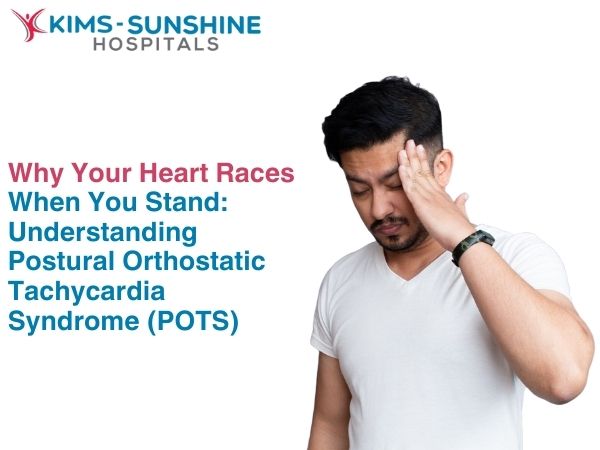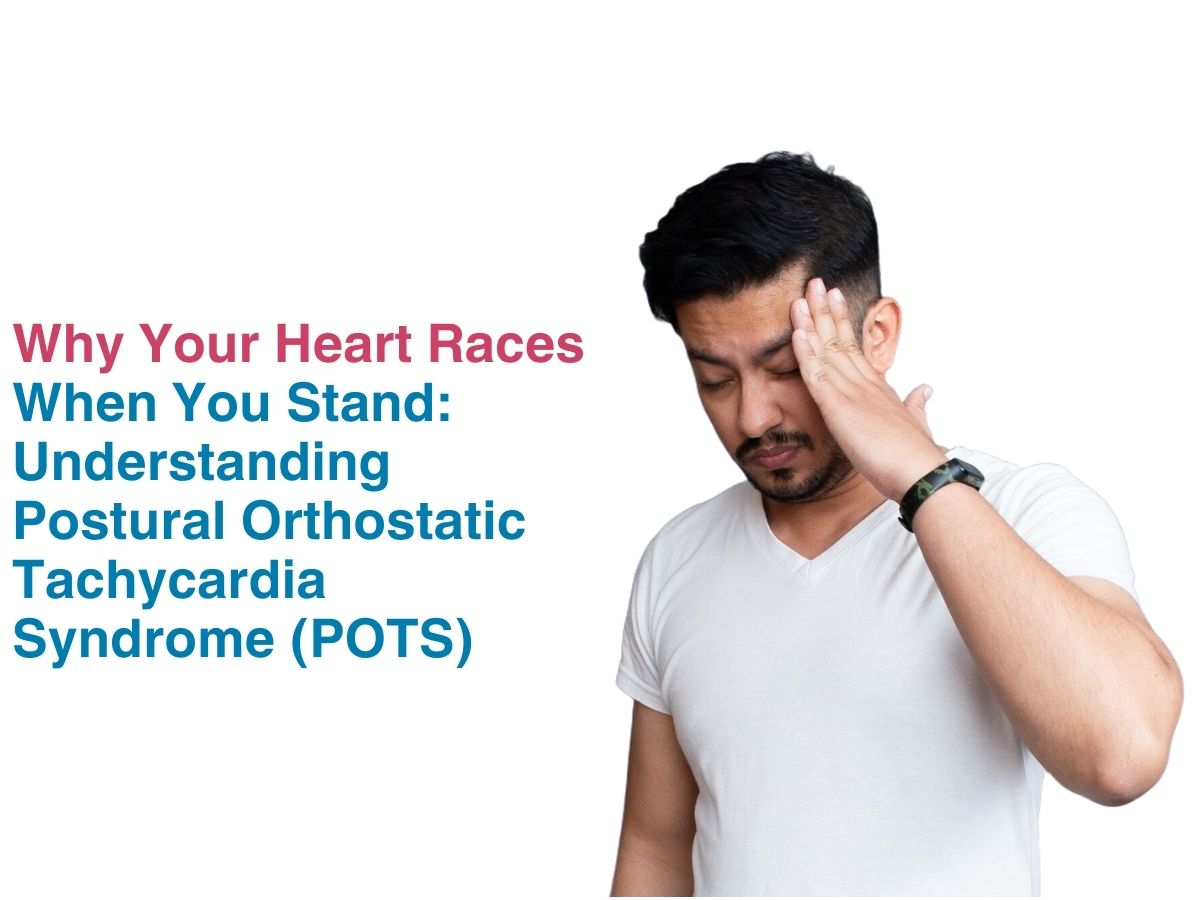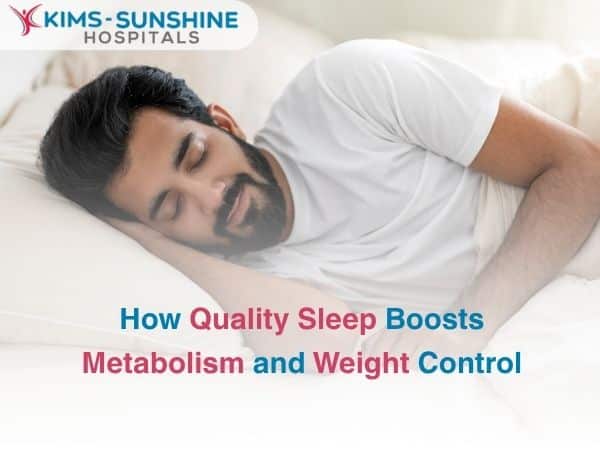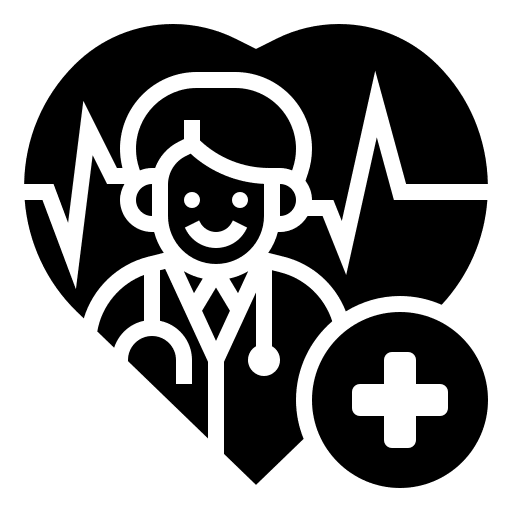
Why Your Heart Races When You Stand: Understanding Postural Orthostatic Tachycardia Syndrome (POTS)

Postural Orthostatic Tachycardia Disorder (POTS) is a circulation related disorder. Normally, our circulation is regulated by the autonomic nervous system (ANS)- over which we have no conscious control. It is different from orthostatic hypotension, which is a condition where an individual’s blood pressure (BP) plummets within the first 3 minutes of them standing up. It is also not related to a drop in BP due to dehydration or acute blood loss. Only when these other conditions have been completely ruled out during a routine tilt table test, is POTS diagnosed with surety. This is why it is a tricky condition to deal with. For some reason, it seems to affect more women than men and doctors don’t exactly know the reason for this condition to exist either. This condition is practically unheard of in the Indian subcontinent.
Why Does My Heart Beat Faster When I Stand Up-
In a normal scenario, our BP is slightly higher when we are standing, when compared to sitting down or lying down. This is because gravity is more intensely felt when we stand up and more force is needed to pump blood upwards, to the brain and upper torso, when compared to regions below the heart. This is done by constricting blood vessels, so that the higher force is used for more efficient blood flow.
When someone has POTS, the ANS does not work normally and causes the heart to overcompensate due to the blood vessels not receiving the correct signal or not constricting properly in response to a signal sent by the nerve cells. This is a chronic condition, which is why these people have to deal with bouts of ‘brain fog’, fatigue and feeling faint or dizzy. For some individuals, the BP may be high or low when they stand up for more than 3 minutes at a time. There are different kinds of POTS too, based on the symptoms observed.
Symptoms Of Postural Orthostatic Tachycardia Syndrome (POTS)-
Let us look at some of the most prominent symptoms that show up, though the degree of severity can vary a lot from one person to another, depending on a number of factors- most of which have not been fully understood by doctors even now.
- Brain fog
- Feeling very tired all the time
- Not being able to focus on any given task
- Heart palpitations
- You may feel very nauseous and need to vomit.
- You may have severe headaches.
- Your symptoms may seem to get way worse when you move around for a while or have exercised.
- Your face may look very pale while your limbs look blue in colour when they are located below heart level for extended periods of time.
- Some of these symptoms may also be bad if you have skipped a meal.
There is no cure for this condition, but it can be managed. It is not fatal either, but it does seem to make people more prone to falls.
Lifestyle Changes For Managing POTS-
Making lifestyle related changes seems to help with managing this condition, so let us look at some of those measures-
- You need to ensure that you stay hydrated- so drink up to 2.5 litres of water every day, without fail and take any prescribed medication.
- You will also be advised to eat salty foods or snacks more often, to keep your blood pressure up.
- Alcohol or other dehydrating beverages can worsen symptoms, so you should stay away from them.
- Caffeine seems to work for some people, while not for others- so you should check for yourself. This is because caffeine can constrict blood vessels and cause a change in BP.
- Exercising is important but the type is also determined by your range of motion- as in can you stay upright or do you have to exercise while lying down.
- If you know that standing or sitting for too long is an issue, then you may need to find postures that work for you.
Conclusion
Research has shown that there is a genetic component to POTS, but a majority of cases are idiopathic (no known cause) in nature. They seem to present in adolescence and affect more women than men. Alos, symptoms may come and go, though it is a chronic condition. Some people have learnt to compensate by sitting on a low stool or standing with their legs crossed, but even that is only for short bursts of time. POTS is normally diagnosed after a few specialised tests are done. A neurologist and a cardiologist may work together to diagnose you and then come up with a treatment or management plan.
Frequently Asked Questions
Is it normal for my heart rate to increase when I stand up?
What triggers POTS symptoms to worsen?
Are there specific exercises that can help manage POTS?
Is POTS more common in women than men?
What medications are commonly prescribed for POTS?

Dr. Sai Chandra Niveditha A.
MBBS, MD (General Medicine), DrNB (Neurology, KMC, Mangalore, Manipal Academy),
MRCP (UK-SCE, Neurology) Consultant Neuro Physician






